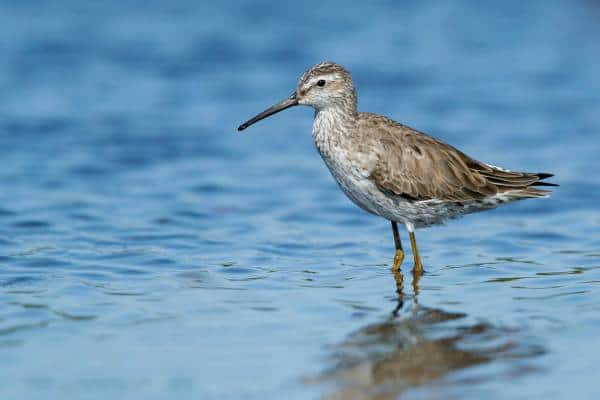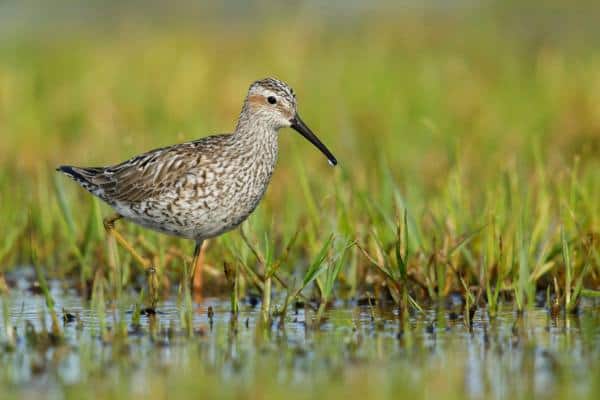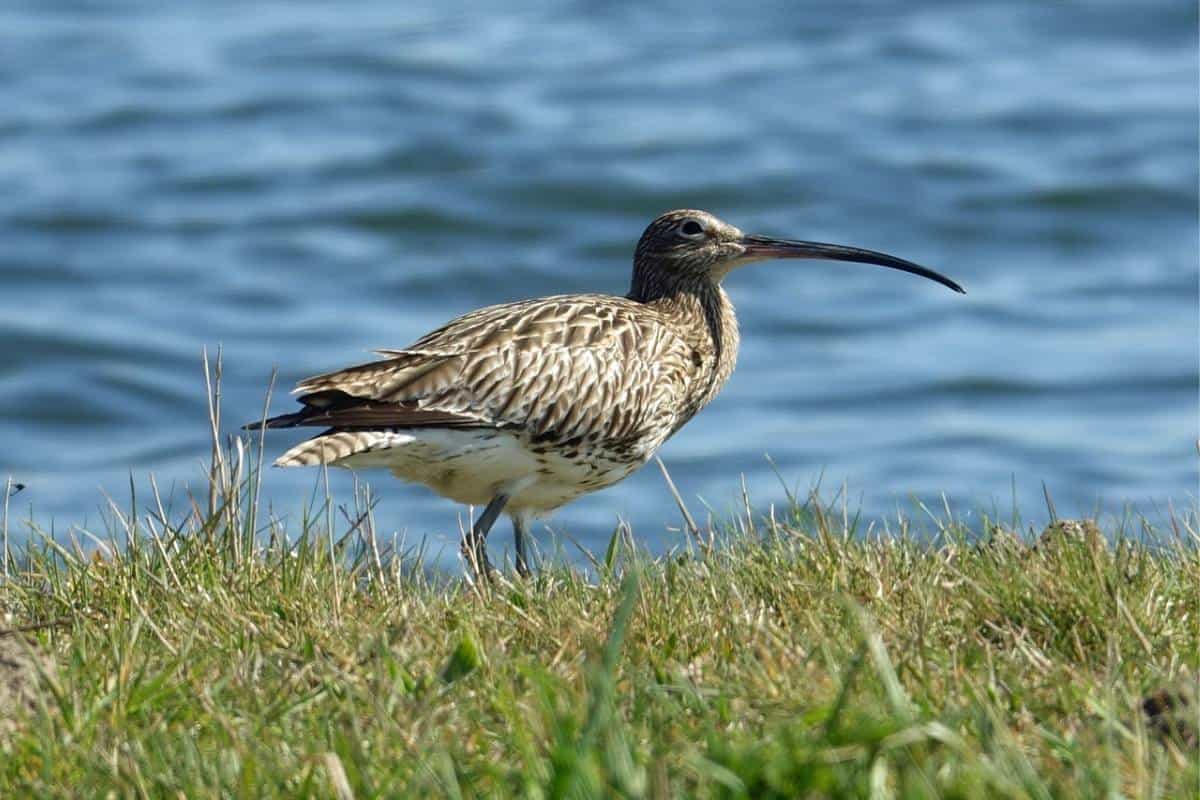Common Name: Stilt Sandpiper
Scientific Name: (Calidris himantopus)| Size | Diet | Range in Hawaii | Status in Hawaii |
|---|---|---|---|
| 7 in. - 9 in. | worms, insects, and crustaceans | Oahu and Kauai | Least Concern |
The Stilt Sandpiper (Calidris himantopus) is a unique shorebird with long, thin legs and a slender, slightly curved bill that it uses to probe mud and sand for invertebrates. This striking bird is known for its distinctive white belly and brown-speckled back, and it breeds in the Arctic tundra and wetlands of North America. While its range is primarily in North and South America, the Stilt Sandpiper has also been spotted as a rare vagrant in Hawaii. Despite its infrequent sightings on the islands, the Stilt Sandpiper’s existence in Hawaii is a fascinating example of the bird’s ability to travel long distances and explore new territories.
Stilt Sandpiper
Appearance

The Stilt Sandpiper, a slender and elegant shorebird, captivates with its unique appearance. Standing at around 7 to 9 inches tall, it is a compact bird with a long, slender neck and thin, spindly legs that seem to defy gravity. Its bill, perfectly designed for its feeding habits, is thin and slightly curved, allowing it to delicately probe the muddy shores in search of tasty invertebrates.
The Stilt Sandpiper’s plumage is a symphony of earthy tones, featuring a mix of browns and grays, intricately patterned to blend seamlessly with its marshy surroundings. During the breeding season, the male’s chestnut crown adds a touch of vibrant color, contrasting against its otherwise subdued palette. In flight, the Stilt Sandpiper reveals its long, pointed wings, effortlessly gliding through the air.
Diet
The Stilt Sandpiper possesses a remarkable palate, indulging in a diverse and delectable diet. Small invertebrates, such as worms, insects, and crustaceans, form the core of its diet, providing a rich source of protein. During migration, this resourceful bird may also supplement its diet with seeds and plant matter, adapting to the changing availability of food.
Nesting
These agile shorebirds typically choose nesting sites in the Arctic tundra, where they create shallow scrapes on the ground lined with plant material and feathers. Males engage in courtship displays, showcasing their prowess by performing aerial acrobatics and vocalizing to attract potential mates. Once paired, the male and female work together to build their nest and defend their territory.
Interestingly, Stilt Sandpipers are known to engage in a unique breeding strategy called “polyandry,” where a single female may mate with multiple males. This leads to a shared responsibility in incubating the eggs and raising the chicks. The female typically lays a clutch of 3-4 eggs, and both parents take turns incubating them for approximately three weeks.
After hatching, the adorable downy chicks join their parents in the search for food. The Stilt Sandpiper family navigates the tundra, foraging together as the parents teach their offspring valuable survival skills.
Behavior
During the breeding season, the Stilt Sandpiper engages in courtship displays that are a sight to behold. Males showcase their agility and vocalize to attract potential mates, performing impressive aerial maneuvers that showcase their fitness and prowess.
Stilt Sandpipers are highly social birds and often gather in flocks, particularly during migration. Within these flocks, they exhibit a cooperative foraging behavior, coordinating their movements to maximize their feeding efficiency. They communicate through a range of calls, from soft chirps to more distinctive vocalizations.
Their feeding behavior is equally captivating, as they skillfully use their long, thin bills to probe the mud and water for invertebrates. With their keen eyesight and quick reflexes, they capture their prey with precision, demonstrating their adaptability and resourcefulness in finding food.
When it comes to nesting, the Stilt Sandpiper engages in intriguing breeding strategies. They may practice polyandry, with a single female mating with multiple males. This results in shared incubation duties and parental care, with both parents actively involved in raising and protecting the chicks.
Habitat

During the breeding season, these shorebirds venture to the Arctic tundra, where they select nesting sites in the expansive, open landscapes. Here, amidst the vast stretches of low-lying vegetation, they create shallow nests on the ground, often near wetlands, ponds, or marshes. Along their migration routes, they can be found in a variety of habitats, including coastal mudflats, estuaries, salt pans, and freshwater wetlands.
During the winter months, Stilt Sandpipers seek refuge in warmer regions, such as the southern United States, Mexico, Central America, and northern South America. Here, they inhabit coastal areas, lagoons, and other wetland habitats, often joining mixed flocks of other shorebirds.
Range
The Stilt Sandpiper, a migratory bird known for its Arctic breeding grounds and South American wintering areas, occasionally graces the islands of Hawaii with its presence. While not a regular resident, this elegant shorebird has been documented as a rare visitor to Hawaii, particularly on the islands of Oahu and Kauai.
Conservation Status
The conservation status of the Stilt Sandpiper warrants attention and concern. This captivating shorebird is currently listed as a species of “least concern” on the IUCN Red List, reflecting its relatively stable population size. However, its overall numbers are still relatively low, and various threats pose potential risks to its future.
Interesting Facts
1. Elegant disguise
The Stilt Sandpiper’s plumage provides excellent camouflage. Its mottled brown and gray feathers, adorned with intricate patterns, help it blend seamlessly into its marshy surroundings, providing effective concealment from predators and making it a master of disguise.
2. Rapid growth
Stilt Sandpiper chicks grow at an astonishing rate. Within a few days of hatching, they develop strong legs and begin walking and feeding alongside their parents. This accelerated growth allows them to become independent quickly and join their parents in the challenging journey of migration.
3. Unique leg coloration
During the breeding season, the legs of male Stilt Sandpipers turn a vibrant reddish-orange color. This striking coloration serves as a visual signal to attract potential mates and establish dominance within their breeding territories.
4. Energetic efficiency
Stilt Sandpipers have an interesting adaptation that allows them to conserve energy during long flights. They employ a “Vortex Surfing” technique, flying slightly behind and to the side of another bird to take advantage of the updraft created by the leading bird’s wings, which reduces their energy expenditure during migration.
5. Rapid departure
When startled or threatened, Stilt Sandpipers can take off and be in the air within seconds. Their agile flight and swift departure allow them to evade potential predators and quickly seek safety.
Frequently Asked Questions
1. How long do Stilt Sandpipers live?
Stilt Sandpipers can live up to 10 years or more in the wild. Their lifespan depends on successfully navigating their annual migrations, finding suitable breeding and wintering grounds, and overcoming various challenges they encounter throughout their life cycle.
2. How far do Stilt Sandpipers migrate?
Stilt Sandpipers undertake remarkable migrations, covering thousands of miles each year. Their migration routes can span across continents, and some individuals have been known to travel more than 6,000 miles during their non-stop flights.
3. Can Stilt Sandpipers swim?
Stilt Sandpipers are primarily wading birds and are not known for swimming extensively. They are adapted for walking and wading through shallow waters, probing the mud for food. However, they may occasionally swim short distances if necessary or when faced with water obstacles during their migration journeys.
4. Are Stilt Sandpipers diurnal or nocturnal?
Stilt Sandpipers are primarily diurnal, meaning they are active during the daytime. They forage, engage in courtship displays, and perform other behaviors during daylight hours. However, during migration, they may undertake nocturnal flights, utilizing the cover of darkness to minimize predation risks and take advantage of favorable wind conditions.
5. Can Stilt Sandpipers tolerate saltwater habitats?
While Stilt Sandpipers are predominantly found in freshwater and brackish habitats, they can tolerate saltwater environments to some extent. During migration and wintering, they can be observed in coastal areas, including mudflats and estuaries, where they may encounter varying degrees of salinity. However, their preference lies in wetlands and shallow freshwater habitats where they find abundant food resources.




